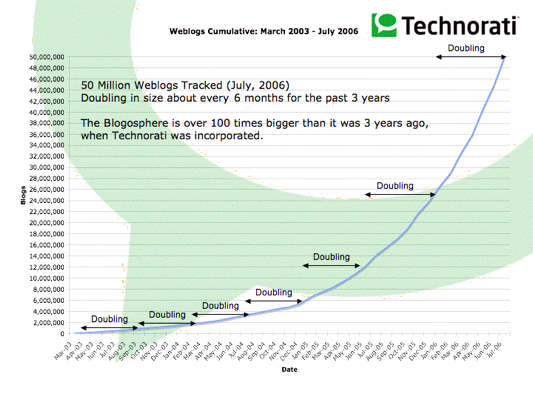Public relations practitioners in Toronto and Ottawa have a new monthly forum to discuss social media from a PR perspective.
 The Ottawa meetup is called Third Monday. The Toronto group is called Third Tuesday. And, you guessed it, they’ll generally be held on Mondays or Tuesdays.
The Ottawa meetup is called Third Monday. The Toronto group is called Third Tuesday. And, you guessed it, they’ll generally be held on Mondays or Tuesdays.
A great group of bloggers and social media enthusiasts have come together to get these meetups going. Joining me in organizing the groups are David Jones, Terry Fallis, Ed Lee and Chris Clarke in Toronto and Colin McKay, Brendan Hodgson and Ian Ketcheson in Ottawa.
 We believe that public relations practitioners have a unique perspective on social media. We look at social media as an extension of the conversations we have always had with journalists and stakeholders to now include a much larger group of citizen journalists and interested people whose online conversations lead to the formation of communities of interest.
We believe that public relations practitioners have a unique perspective on social media. We look at social media as an extension of the conversations we have always had with journalists and stakeholders to now include a much larger group of citizen journalists and interested people whose online conversations lead to the formation of communities of interest.
Others groups have different starting points and different perspectives on social media. Advertisers, for example, start from the perspective of disaggregating mass media and the need to find new advertising vehicles and strategies that will replace failing mass media campaigns.
Because we have this unique perspective, public relations folks have different conversations than do those people who are grounded in other disciplines. First Monday and First Tuesday will provide us with the opportunity to talk about social media framed as a public relations challenge. We will be able to focus on its potential for and impact on our profession. How we can extend our capablities by embracing social media. How we can enhance our careers. How we can better serve our clients. And how we can then take our best thoughts forward into the broader discussion with others. Ensuring that public relations is well represented. Ensuring that public relations is in a leadership position in exploring and applying social media.
 We have a great first speaker to launch our meetups. Shel Israel, co-author of Naked Conversations, will kick off the gatherings with back to back sessions on September 25 in Ottawa and September 26 in Toronto. I can’t think of a better way to kick off the discussion than with a man who hails from PR and who wrote THE book on blogging.
We have a great first speaker to launch our meetups. Shel Israel, co-author of Naked Conversations, will kick off the gatherings with back to back sessions on September 25 in Ottawa and September 26 in Toronto. I can’t think of a better way to kick off the discussion than with a man who hails from PR and who wrote THE book on blogging.
So, if you are a public relations practitioner who wants to meet other PR folks to talk about practical applications of social media, join the conversation. Sign up for Third Monday (Ottawa) or Third Tuesday (Toronto).
And, for those who’ve spotted a similarity to the SF Bay Area Third Thursday group organized by Mike Manuel, Jeremy Pepper, Giovanni Rodriguez, and Phil Gomes, you’re right. In looking for a model, we thought that Third Thursday was exactly what we wanted to replicate in Canada. Mike gave us the go ahead to borrow from the Third Thursday and that’s what we’ve done. Thank you Mike!
 The second half of the day promises to get off to a strong start with a presentation from Jeremiah Owyang, Community marketing: Turn executives into powerful evangelists for the company message.
The second half of the day promises to get off to a strong start with a presentation from Jeremiah Owyang, Community marketing: Turn executives into powerful evangelists for the company message.
 I’m heading over to the conference in a few minutes. There are a number of sessions I hope to attend and post about.
I’m heading over to the conference in a few minutes. There are a number of sessions I hope to attend and post about. I’m heading to Chicago September 20 to 22 for the 10th annual Ragan
I’m heading to Chicago September 20 to 22 for the 10th annual Ragan 


 I’m a “word” guy. And my photography skills are limited to point and click. That’s never really been a problem so long as my photography was limited to pictures of the family and pets.
I’m a “word” guy. And my photography skills are limited to point and click. That’s never really been a problem so long as my photography was limited to pictures of the family and pets. A hat tip to the
A hat tip to the 


